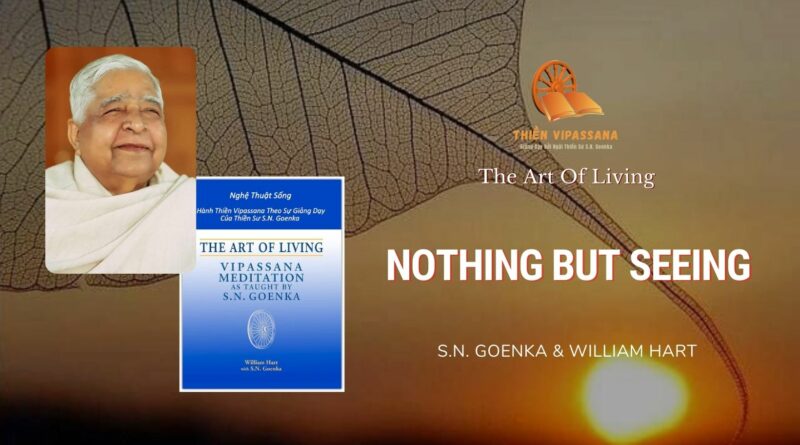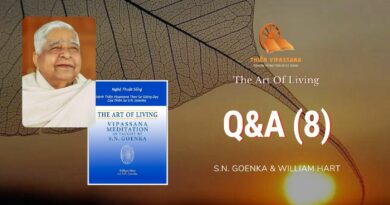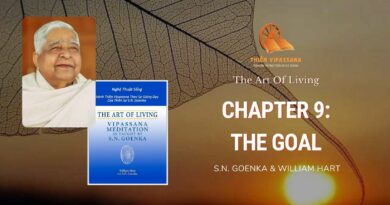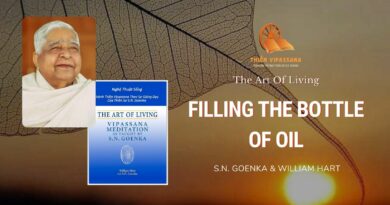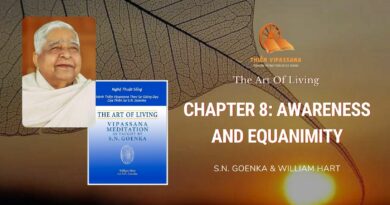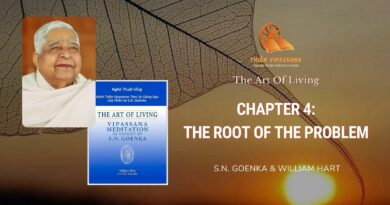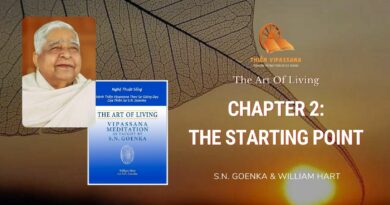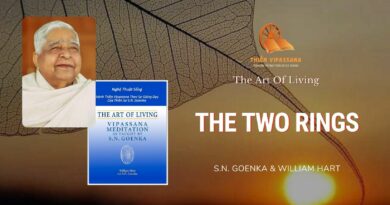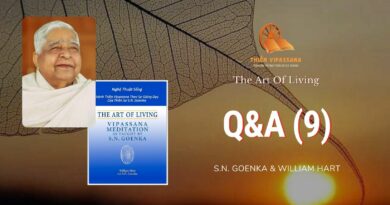Nothing But Seeing
There lived a recluse near where Bombay now stands, a very saintly man. All who met him revered him for his purity of mind, and many claimed that he must be fully liberated. Hearing himself described in such high terms, naturally this man began to wonder, “Perhaps I am in fact fully liberated.” But being an honest person, he examined himself carefully and found that there were still traces of impurities in his mind. Surely as long as impurities remained, he could not have reached the stage of perfect saintliness. So he asked those who came to pay respects to him, “Is there not anyone else in the world today who is known to be fully liberated?”
“Oh yes sir,” they replied, “there is the monk Gotama, called the Buddha, who lives in the city of Sāvatthī. He is known to be fully liberated, and he teaches the technique by which one can achieve liberation.”
“I must go to this man,” the recluse resolved. “I must learn from him the way to become fully liberated.” So he started walking from Bombay across all of central India and came at last to Sāvatthī, which is in the modern-day state of Uttar Pradesh, in northern India. Having arrived in Sāvatthī he made his way to the meditation center of the Buddha, and asked where he might find him.
“He has gone out,” one of the monks replied. “He has gone to beg for his meal in the city. Wait here and rest from your journey; he will return shortly.”
“Oh no, I cannot wait. I have no time to wait! Show me which way he has gone and I shall follow.”
“Well if you insist, there is the road he took. If you like, you can try to find him along the way.” Without wasting a moment the recluse set off again, and came to the centre of the city. There he saw a monk going from house to house to beg for his food. The wonderful atmosphere of peace and harmony which surrounded this person convinced the recluse that he must be the Buddha, and asking a passer-by he found that it was indeed so.
There in the middle of the street, the recluse approached the Buddha, bowed down, and caught hold of his feet. “Sir,” he said, “I am told that you are fully liberated, and that you teach a way to achieve liberation. Please teach this technique to me.”
The Buddha said, “Yes, I teach such a technique, and I can teach it to you. But this is not the proper time or place. Go and wait for me at my meditation center. I’ll soon return and teach you the technique.”
“Oh no sir, I cannot wait.”
“What, not for half an hour?”
“No sir, I cannot wait! Who knows? In half an hour I may die. In half an hour you may die. In half an hour all the confidence I have in you may die, and then I shan’t be able to learn this technique. Now, sir, is the time. Please teach me now!”
The Buddha looked at him and saw, “Yes, this man has little time left; he will die in just a few minutes. He must be given Dhamma here and now.” And how to teach Dhamma while standing in the middle of the street? He spoke only a few words, but those words contained the entire teaching: “In your seeing, there should be only seeing; in your hearing nothing but hearing; in your smelling, tasting, touching nothing but smelling, tasting, touching; in your cognizing, nothing but cognizing.” When contact occurs through any of the six bases of sensory experience, there should be no valuation, no conditioned perception. Once perception starts evaluating any experience as good or bad, one sees the world in a distorted way because of one’s old blind reactions. In order to free the mind from all conditioning, one must learn to stop evaluating on the basis of past reactions and to be aware, without evaluating and without reacting.
The recluse was a man of such pure mind that these few words of guidance were enough for him. There by the side of the road, he sat down and fixed his attention on the reality within. No valuation, no reaction; he simply observed the process of change within himself. And within the few minutes left to him to live, he attained the final goal, he became fully liberated.4
Bài viết này được trích từ cuốn sách The Art Of Living – Thiền Sư S.N.Goenka và William Hart.

